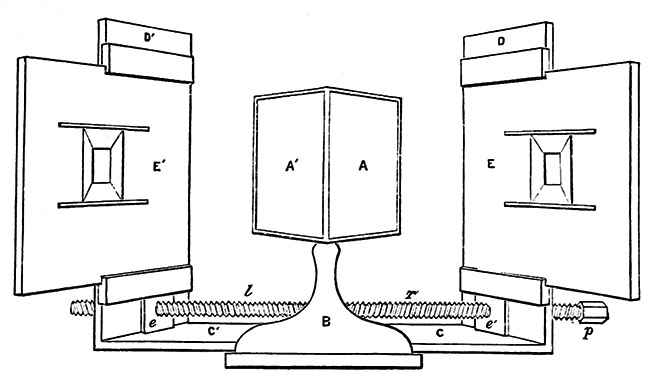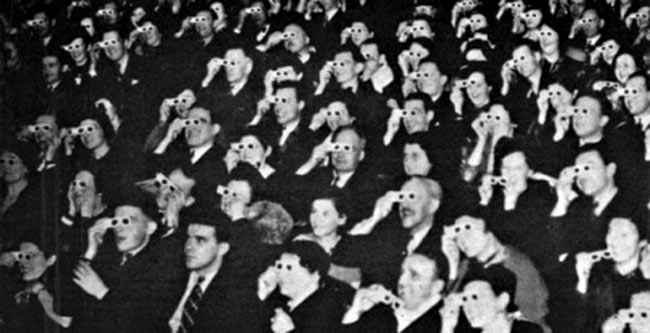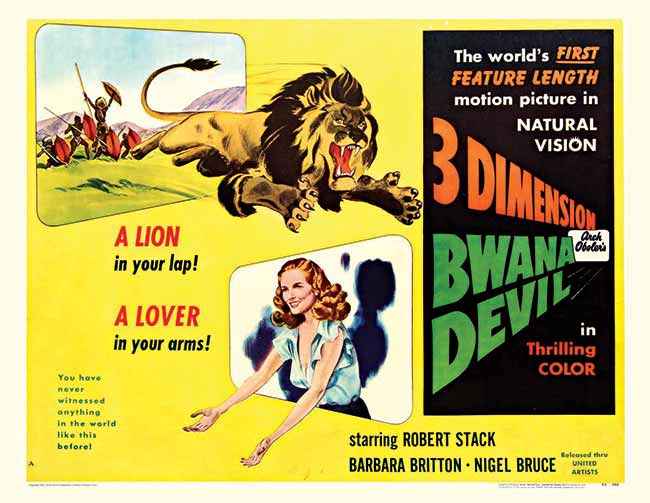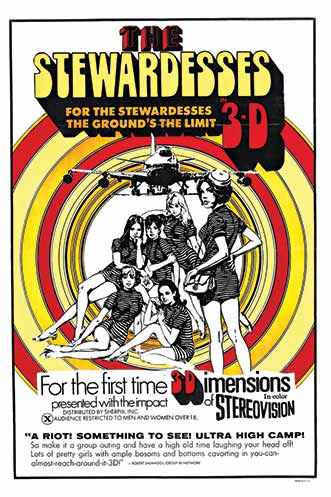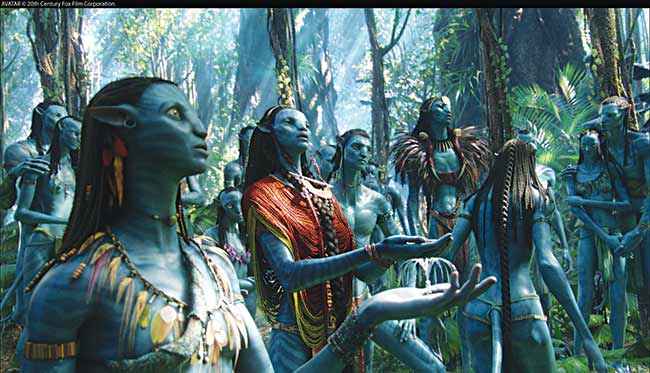Origins and history of 3D
We trace the roots of 3D viewing, the very first innovators and the gradual progress of 3D beginning with the invention of the first stereoscope and trace the journey of 3D to the mind blowing effects that we see currently
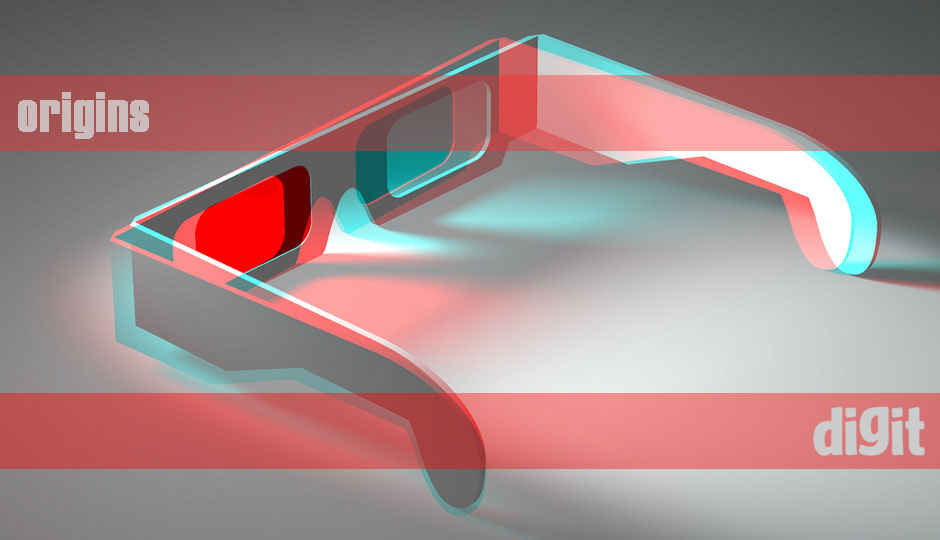
3D viewing is not as young a craft as we commonly perceive it to be. Back in 1838, Sir Charles Wheatstone invented one of the first and very basic forms of stereoscope, using two mirrors tilted at 45 degrees to the viewer’s eyes. The instrument illustrated the impact that binocular depth perception of an image had. It also showed what roughly translates to 3D viewing of today. The mechanism presented images of the subject in question to the left and right eyes, separately, and successfully showed how the brain can perceive such images with a sense of depth. This very first instance of 3D vision, or a stereoscope, was a bare bones structure that did not even employ lenses, and came a year before the very first photograph was produced.
 Survey
SurveyThe first perception of depth
Sir Charles’ stereoscope used a painting and showed a three-dimensional version to intrigued audiences. About a decade later, in 1849, Scottish physicist Sir David Brewster constructed the world’s first lenticular telescope. He was the first to use lenses in the construction of a stereoscope, thereby making the devices much smaller in size. The stereoscopes became portable, and the initial handheld stereoscopes became known as Brewster Stereoscopes. After failing on his quest to find instrument makers in the United Kingdom who could work on his design of the stereoscope, Sir Brewster headed to France, where he met Louis Jules
Duboscq, a French instrument maker famous for being one of the earliest patrons of photography. Duboscq would go on to tweak his stereoscope and market them, suddenly creating widespread demand for the 3D viewing stereoscopes and gave birth to the 3D industry. The initial, miraculously realistic results that the stereoscopes gave caught the attention of Queen Victoria, and Sir Brewster’s work was exhibited at the Great Exhibition of the Works of Industry of All Nations at Hyde Park, London, in 1851. ‘Stereographers’, or photographers who would capture scenes and views from across the world for stereoscopes, came into being, and a large number of stereoviews and stereo cards were developed and sold. This was the very first instance of 3D viewing capturing widespread attention, and Sir David Brewster was commonly held as the inventor of the stereoscope.
Wheatstone’s initial design of the stereoscope
This, however, was stated by Sir Brewster himself as undue credit. He stated that the very first concept of a stereoscope, albeit without the use of a lens or a mirror, was made by a Mathematics professor, Mr. Elliot. In his book titled ‘The Stereoscope; Its History, Theory and Construction’ published in 1856, he states that Mr. Elliot first gathered the understanding and concept of stereoscopic vision leading to perception of depth of an image when he wrote an essay for the University of Edinburgh’s Class of Logic, back in 1823. Sir David’s description of Mr. Elliot’s very first experiment with obtaining a 3D image states, “Photography did not then exist, to enable Mr. Elliot to procure two views of the same scene, as seen by each eye, but he drew the transparency of a landscape with three distances. The first and most remote was the moon and the sky, and a stream of water from which the moon was reflected, the two moons being placed nearly at the distance of the two eyes, or 2 inches, and the two reflected moons at the same distance. The second distance was marked by an old cross about a hundred feet off; and the third distance by the withered branch of a tree, thirty feet from the observer. In the right-hand picture, one arm of the cross just touched the disc of the moon, while, in the left-hand one, it projected over one-third of the disc. The branch of the tree touched the outline of a distant hill in the one picture, but was “a full moon’s-breadth” from it on the other. When these dissimilar pictures were united by the eyes, a landscape, certainly a very imperfect one, was seen in relief, composed of three distances.” Mr. Elliot did not pursue this further owing to the difficulty of obtaining high quality images, and only resorted back to his study when he noted Sir Charles Wheatstone’s published paper in the Philosophical Magazine in March 1852, alongside contesting his claim of inventing stereoscopic 3D vision.
The first ever 3D movie
These were the initial stepping stones laid down by early pioneers in the field of 3D vision. The earliest known person to fidget with stereoscopes and 3D viewing in films was William Friese-Greene. A prolific inventor famous for his works in motion picture and the chronophotographic camera, which used celluloid as a medium for recording films and could capture up to 10 photographs per second on a perforated celluloid film, Friese-Greene experimented with cameras to create 3D vision on screen, thereby giving the cue to filmmakers and films that would follow. On September 27, 1922, Harry K. Fairall produced and directed a silent film, The Power of Love, using a red-and-green anaglyph 3D camera to shoot it. The film premiered at the Los Angeles Ambassador hotel, but did not generate massively favourable reviews.
The first 3D film, shot in 1922, has been lost in the history of time
This was the world’s first 3D movie, and gave the audience the option to view alternate endings to the film. Viewers could watch the film through either the red eye or the green eye of the provided 3D glass, and could thus choose an alternate storyline (happy or sad), based on preference (although frighteningly interesting, we do not know which ending the majority chose to see). This move of providing two endings was owing to the use of the anaglyph 3D technology, presenting two different images that the brain synthesises into one. Unfortunately, however, the 3D version failed to garner widespread interest, and was screened only one more time in front of the press, in New York City. Between 1923-24, Selznick Distributing Corporation procured the movie and screened it in 2D, under the name of Forbidden Lover.
The Golden Era of 3D (1952-54)
The very first experiment with 3D in films did not capture the fancy of the public the way stereoscopes did with still images, and it was a long, three-decade wait until Bwana Devil in 1952 garnered notable attention. Written, directed and produced by Arch Oboler, Bwana Devil accounted for a number of world’s-first records, such as the world’s first 3D film in colour, and the world’s first full-length feature film with audio. The film also sparked the craze for 3D movies across the 1950s, and was advertised with the tagline, “A lion in your lap! A lover in your arms!”
Bwana Devil, based on a true story, gave birth to the golden era of 3D films
The film was shot in Natural Vision 3D process, devised by Milton and Julian Gunzburg. They had pitched the system to a number of production houses including 20th Century Fox, Columbia, Paramount and Metro-Goldwyn Mayer, all of whom had turned it down. Oboler went ahead, shot and presented the Bwana Devil, which would later go on to become a milestone. The film was presented dual-strip, with Polaroid filters. This spawned filmmakers into action, and gave rise to what is now referred to as the golden era of 3D films (1952-54), screening films like Man in the Dark and House of Wax (first 3D feature film to have stereophonic sound). Another impact that 3D films had on the history of films is in forming the juncture of an intermission in films. With two films having to be played via two separate projectors, the largest reel length possible to be loaded on to a projector was approximately of one hour. This often meant that a break within the films was necessary to continue screening the entire film, and as a result, filmmakers started incorporating the factor of the intermission as a pivotal crisis point in the films, thereby maintaining the heightened attention of the audience intact through the interval.
| FUN FACT |
|---|
| Laurens Hammond, in December 1922, premiered the world’s first alternating-frame 3D viewing system, known as the Teleview. Using separate prints for each eye and an interlocking projector system, frames for each eye were presented alternatingly to the other eye. Each frame was shown three times to reduce flicker, and custom viewing devices were synchronised with the projector to give the viewers a ‘clean’ 3D experience. Hammond would later invent the Hammond Organ, a device that took its operational principles from the Telharmonium – a massive instrument that is hailed as the origin of music streaming in any form, one that we covered in our last month’s origin story of music streaming. |
The golden era of 3D movies was short lived, and demand and production of 3D films gradually started declining by late 1954. Among the reasons that initiated the decline was the effort required to synchronise and maintain two separate reels with precise coordination, shooting cost, and the unusability of side seats in a theatre because of the directional silver screen (essential reflective surface for the working of Polaroid filters) leading to lower profits of movie theatres. Among the movies that brought 3D films to the audience and gathered considerable interest were Alfred Hitchcock’s Dial M for Murder and Son of Sinbad, an RKO/Howard production.
Signs of resurgence
About a decade later, the 1960s saw 3D films attempting a revival. Coincidentally, Arch Oboler was yet again the man behind 3D’s slow resurgence. His usage of Space Vision 3D, a technology that allowed 3D films to be played on a single strip and using a special, Trioptiscope Space-Vision lens, deemed the restrictions imposed by dual-strip playback minimal. However, the result obtained was darker and more polarised than what was seen earlier.
In 1969, the advent of Stereovision proved to be a groundbreaker in the world of 3D films. A 35mm single strip format could now play 3D films, and the film The Stewardesses that cost $100,000 to be produced back then, went on to become a phenomenal success. It is the highest grossing 3D film till date, eventually earning a consolidated sum of $140 million over time, and becoming one of the most successful films (in terms of investment and returns) ever made. Stereovision became the basis of 3D films for a span of almost 25 years, following the success of this film.
The Stewardesses has been one of the most profitable films of all time
IMAX’s three-dimensional success
The rise of IMAX and its experiments with 3D gave rise to a newer chapter in 3D vision, in the late 1980s. IMAX began producing non-fiction 3D films, like Transitions in 1986 and Echoes of the Sun in 1990. IMAX’s dome screen became a significant entity of its 3D screening process, and Echoes of the Sun became the first film to be screened using alternate-eye shutterglass technology. In between the ‘90s and the latest resurgence in computer graphics-powered 3D action like Avatar (2009), significant 3D films produced and screened by IMAX include Wings of Courage (1996), T-Rex: Back to the Cretaceous (1998) and Space Station 3D (2002).
James Cameron’s Ghosts of the Abyss in 2003 saw the advent of the first, digital HD IMAX camera. It became the first film to have been shot in IMAX’s Reality Camera System. Another film that was shot with the same technology but arguably varying finesse was Spy Kids 3D: Game Over, by Robert Rodriguez in 2003. In 2004, The Polar Express became the world’s first animated 3D film, leading to the advent of films Avatar, Bolt, Life of Pi, The Adventures of Tintin, Superman Returns and the latest, Star Wars: The Force Awakens.
Avatar was pivotal in respawning interest in 3D
Computer-generated graphics have led to increasing finesse, and the stunning display of visuals that Avatar and Life of Pi stand for. Today, 3D viewing has reached our homes with 3D televisions becoming increasingly commonplace, and even smartphones incorporating naked eye 3D viewing. The market for 3D films, however, has seen a reported drop of interest, possibly owing to the fact that 3D is not a novel artifact to be marveled at, any more. Additionally, with the rise of virtual reality, we are not restricted to a perceived depth of space with our eyes, but can now immerse ourselves in a digitally-simulated and artificially scaled world that not only perceives depth of vision, but also simulates physical movement in the virtual world. 3D may not be dying out immediately, but its days certainly seem to be numbered.
Main Image courtesy: Dominic Alves/Flickr
